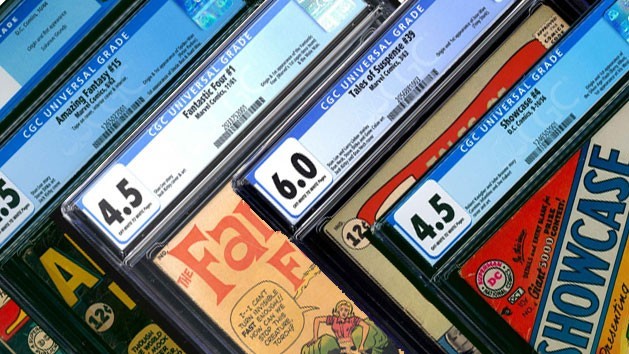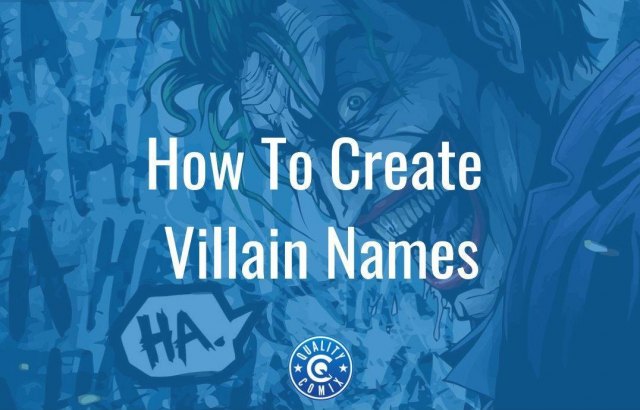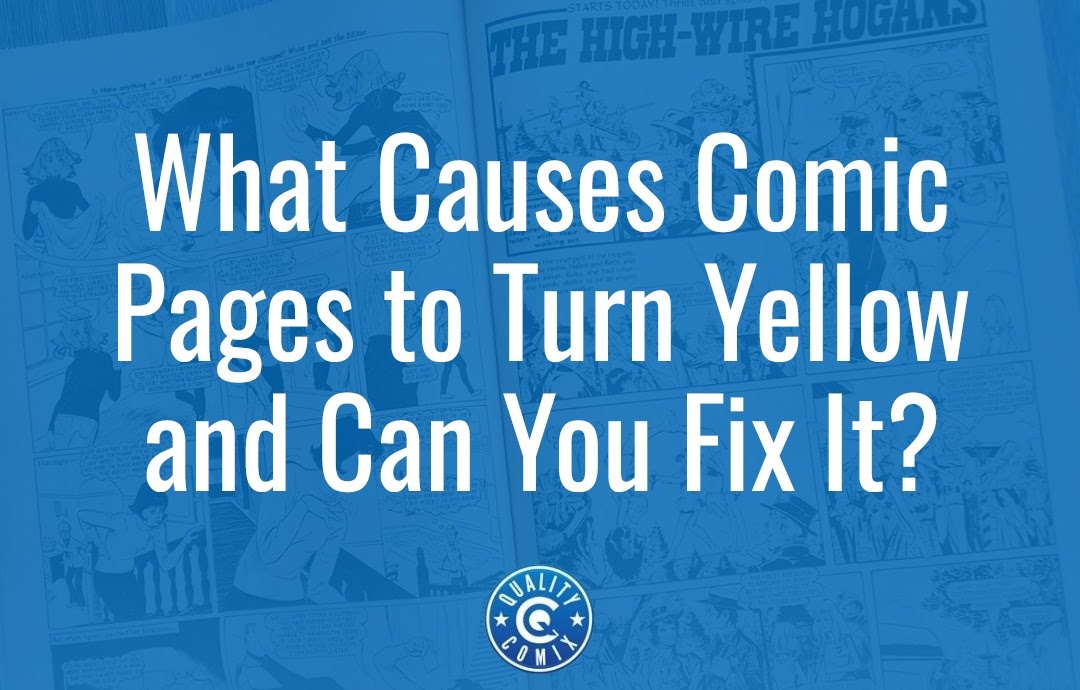
When you think about a comic book, what comes to mind? Bright colors, flashing characters, quippy dialogue, sure. What about the prevailing look and feel of the comic?
The older you are, the more likely you are to have a particular kind of mental image of a comic book. That image is likely centered around yellowed or browned pages, with still-bright inks or slightly faded images adorning each page.
Imagine an image of the iconic Action Comics #1. The cover shows bright colors and a flat white background around the bright red ACTION COMICS title at the top. Now, compare that to a picture of a real comic. That vibrant white is faded, dingy, almost gray.
The inside of the comic fares no better. While the paper that comics were printed on was hardly a pristine bleached white even back when they were new, these days, it's hard to find a comic from the golden age that isn't practically brown with age.
What is it about comics that makes them turn yellow, and is there anything you can do to brighten them back up? Let's talk about it.
Table of Contents
Why Comics Turn Yellow
Comics aren't actually the only kind of media that yellows over time. In fact, many things do, both old and newer. Old newspapers are usually yellow or brown, old magazines lose their luster, and even an entire era of electronics has turned yellow/brown with age.
The question is, why does it happen?
The answer is the paper itself. The paper used in comics, newspapers, and a whole host of other paper media, especially in the 30s through the 60s, was wood pulp paper. This paper wasn't purified and bleached the way our modern printer paper is. It was just about the cheapest paper-making process available, using the least amount of labor and materials, often the cheapest possible discarded wood shavings and dust from other sources.
No one thought twice about this. Why? Well, comics, like newspapers and other such items, were made to be disposable. Nobody expected people to want to read these comics years later. After all, comics were just gimmicks for children; it was literature and books where the real value was stored. So, nobody cared that the paper the comics were printed on was barely better than garbage.
Paper is an organic substance. Wood pulp is made up of all of the ingredients in wood, and unless that wood is treated properly, it has a lifespan. It breaks down, whether from exposure to oxygen in the atmosphere, to UV radiation from the light of the sun, to bacteria present on every surface, or even its own chemicals.
In particular, there is a chemical called lignin. Lignin is a class of organic polymers with a fairly complex structure of hydrocarbons. Along with cellulose, lignin comprises a significant portion of plant matter cellular walls, especially in the wood and the bark of a tree or plant.
Lignin is a complex organic molecule, and one thing organic molecules tend to have in common is that oxygen can do an absolute number on them. When it comes to paper, exposure to oxygen will cause that lignin to break down, which turns the paper yellow with the byproducts.
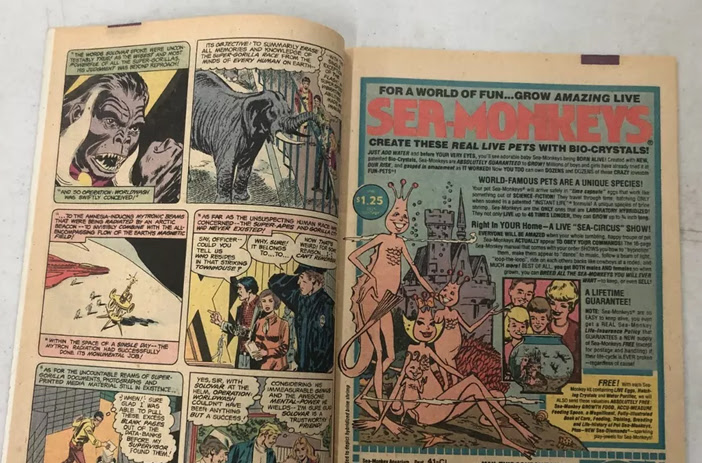
There are other causes as well. Various elements of paper can be broken down by exposure to UV light, and bacterial growth can eat away at it further. These aren't actually going to cause yellowing; instead, they cause other problems. For example, UV light breaks down other molecules and turns the paper brittle, which is why edges chip and extremely old papers can crumble into dust.
What about smoke? A common question we see about old, yellowed, or browned comics is if they are smoke-stained. The answer is, surprisingly, usually no. Smoke – that is, secondhand smoke from cigarettes and other kinds of tobacco products – very much stains everything it comes into contact with. While smoke was prevalent in those days, comics didn't generally stay in a place where they would be heavily exposed. Sometimes, you find comics with outlines of something that sat on top of them, but even then, that's as much UV exposure as it is atmospheric.
Another reason for all of this is acid. See, to turn wood – something hard, inflexible, and resilient – into paper that is flexible and soft and supple, it needs to be treated. Among the treatments used on wood pulp to turn it into paper is an acid bath. Acid eats away at the wood and makes it flexible and pliable, and when it's pressed into paper, it retains that softness.
The trouble here is that the acid needs to be neutralized if you want the paper to last. If you just press the wood pulp into the paper as it is, the acid lingers, and while it's not going to burn your fingers as you read or anything like that, it does very slowly continue to eat away at and damage the paper. This causes things like foxing and further brittleness and damage.
As you might have guessed, nobody cared enough about the things printed on these papers, so the acid wasn't neutralized. As a result, anything made with that paper – comics, newspapers, paperback books, penny dreadfuls, and other old cheap media is difficult to find in any reasonable condition and is often just falling apart.
So, that's why comics end up turning yellow and brown, but what about fixing it?
Can You Fix Yellowed Comic Pages?
Once a comic's pages have turned yellow or brown, is there a way to reverse the process and turn them white again?
The answer is… maybe. Kind of. Depending on the comic. Unfortunately, it's a time-intensive process, it has a high risk of going wrong, and any failure at all whatsoever ends up being considered damage to the comic.
You can do some cleaning of a comic. As demonstrated in videos like this one, it's a painstaking process of careful cleaning, usually just of the covers, that removes dirt and dust from the surface of the comic. This only really works on the covers, though, because they tended to be made of different paper. The interior pages are browned through and through, as often as not.
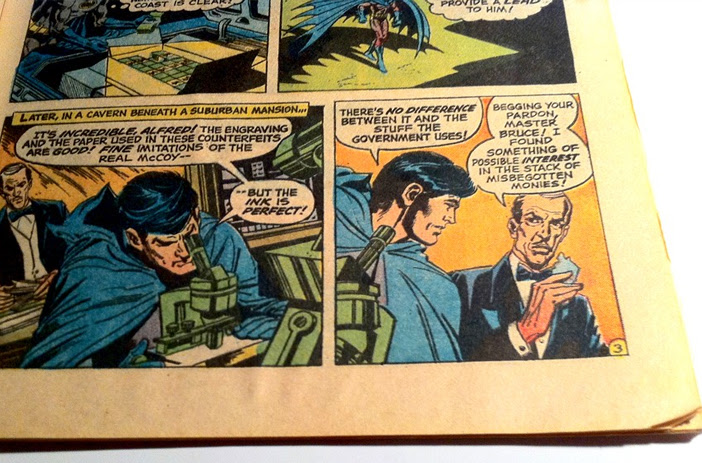
In some rare cases, where the browning of the pages is light and minor, you may be able to remove some of it with a very light surface sanding using a fine-grit abrasive. We do not recommend doing this. At best, you'll give the comic a "restored" grade, which often kills its collector's value; at worst, you damage the comic irreparably.
You can also do a similar thing with hydrogen peroxide, which acts as a kind of bleach for the fibers of the paper itself. This can lighten it, but again, it is pretty much guaranteed to get your comic a restored grade and destroy its resale value. Maybe it's worthwhile for a $5 comic you just want to experiment with, but if you're investing in comics for personal collections or for resale later, it's definitely not worth it.
So, unfortunately, the answer is basically no. There's not really a reasonable way to reverse the yellowing, browning, foxing, or aging processes. Such is the nature of the world we live in, where entropy is inevitable, and nothing lasts forever.
Can You Stop Comics from Yellowing?
There's a ton of debate in the comics community on this one.
Can you stop comics from yellowing? Yes! Somewhat. Temporarily.
So, here's the deal. First of all, one of the biggest things you can do to stop comics from turning brown with age is to remove the acid from the paper they're made with. It's too late for the Golden and Silver Age books to receive this treatment, but fortunately, you don't even have to for most modern comics. Modern comics last years without a hint of wear because modern paper-making is so much more effective at producing a longer-lasting paper that it's not as much of a problem anymore.
At the same time, modern comic companies are investing in stronger, more durable papers and inks, specifically because comics are no longer the disposable child's media they used to be.
All of this means that while you should consider acid as a primary cause of browning and think of ways to mitigate it, you don't really need to worry about it for most modern comics. Comics in the middle of the age zone, though, can still benefit from some preventative treatment.
So, what options do you have?
First up, you can check out acid-absorbing paper. These are sheets of alkaline material that, when they are enclosed with a comic, absorb the acid and neutralize it rather than let it into the comics to break down the paper and lignin. These acid-free and anti-acid sheets can be purchased from most comic shops and are relatively cheap. They also have a limited lifespan; they're used up as they neutralize acid and will need to be replaced, usually every five or so years, though it depends on the products you're using specifically.
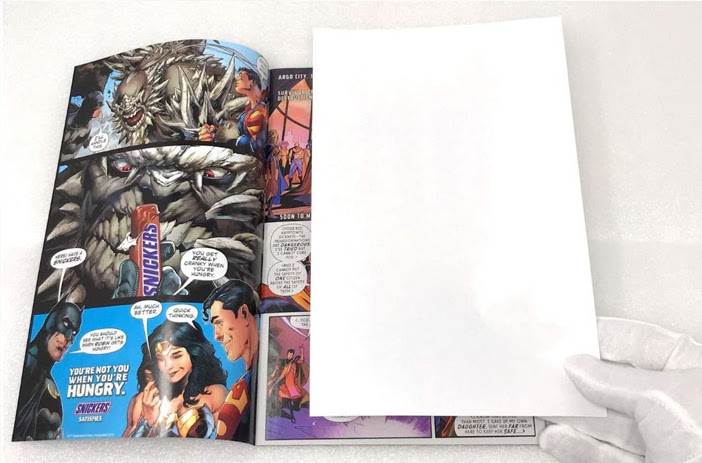
Another option – and one I am hesitant to even bring up – is an archival spray. Archival spray is an archival product used for the restoration and conservation of old paper products, most notably things like newspapers and books. Why do I hesitate to recommend this? A couple of reasons. First, since it's an outside chemical you're applying to your books, there's the potential that it can cause damage if used improperly. It's also something that could be considered restoration if it was obvious enough for CGC to identify it.
There's an interesting discussion to be had around this topic. The idea that a collectible should be as close to its original condition as possible is something actually rather unique to comics. Other collectibles, whether it's cars, cash registers, dolls, or anything else, often end up being restored, even if that restoration uses vintage parts and techniques. Things that can't be restored, like paper media, can often be treated to keep them from decaying further. Only comics are idolized as something that the damage is part of the character and shouldn't be reversed. Is that a good point of view for the comics industry to have? Well, that's the debate. What do you think?
There are also similar sprays that are a varnish, and these add a coating to the outside of the pages. Do NOT use these; they're definitely damaging your comics and are considered both damage and restoration, tanking your grade.
Unfortunately, even these can only do so much. The truth is, nothing can fully withstand the ravages of time and age.
Your best option is actually just good storage. The things that damage comics the most are light, moisture, and heat. So, to ensure that your comics last as long as possible in as good a condition as possible, they should be:
- Kept in a cool place away from higher temperatures.
- Kept in a dry place away from both direct moisture and humidity.
- Kept in a dark place away from the ravages of ultraviolet radiation.
Storage doesn't need to be complex. Each comic should be backed with an acid-absorbing backer board and stored in a nonreactive plastic bag. These can be packed away in boxes along with some kind of humidity-reducing component, usually silica gel. All of this gets stored in a cool and dry place, free from exposure to the environment.
All of this is great! If you're looking to keep boxes of comics in a basement away from the world. If you're in it for the investment, that's just fine. On the other hand, if you're a comic fan and you want to see your cool slabs and view your collection, you don't want them filed away in a vault. It's a trade-off you have to make; do you risk future damage, or do you mitigate that damage while being unable to enjoy them? The choice is yours.

